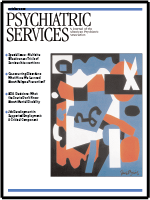Aggression: Psychiatric Assessment and Treatment
Trainees in psychiatry spend comparatively little time learning about aggression. In contrast, depression and schizophrenia consume much more didactic time. Generally speaking, behavioral disturbances, save for childhood disorders, are somehow viewed as ancillary to the major thought and affective disturbances rather than primary conditions to be treated in their own right.
Aggression: Psychiatric Assessment and Treatment, an edited book that covers theory and practice, is a welcome addition to the literature. For the practitioner, the fourth section of the volume is most useful in reviewing pharmacologic methods of reducing violence. Working backward, the third section of the book focuses on the methods of measuring aggression and would be of utility to researchers planning to assess, say, the effects of a drug study on aggressive outbursts on a psychiatric inpatient unit. Clinical models are discussed in the second section of the book, which reviews anger outbursts—currently conceptualized in the nomenclature as intermittent explosive disorder—an illness listed on axis II. The phenomenology of impulsivity—a trait commonly linked with aggression—is thoroughly described by various authors seeking to more precisely clarify the fact that when violence occurs, it is often paroxysmal and repetitive.
I had less patience with the first section of this book, which seeks to study animal and human types of aggression, from developmental models to the effects of genetic and environmental factors. Some of the contributors here discuss theories seemingly far removed from clinical practice.
Missing from this volume is a discussion of the relationship between depression and aggression and between homicide and suicide (suicide is not even indexed). It is often difficult for clinicians to predict which vector aggression will take for a specific patient who is both violent toward others and self-destructive. Although the literature on serotonin deficiencies is mentioned, the destructive pathways violence can take is an important topic, as are the ways in which at least short-term prediction of outcome can proceed, and perhaps should have been included in the book. That said, Coccaro's edited text remains a useful primer for learning about this topic.
Dr. Lion is in private practice and is clinical professor of psychiatry at the University of Maryland School of Medicine in Baltimore.



